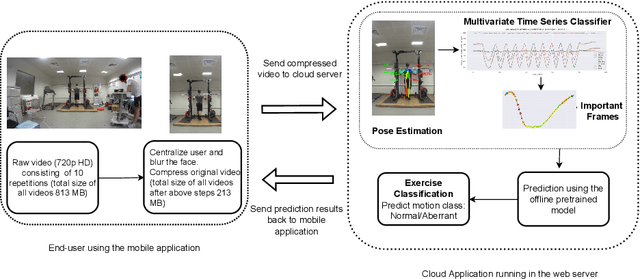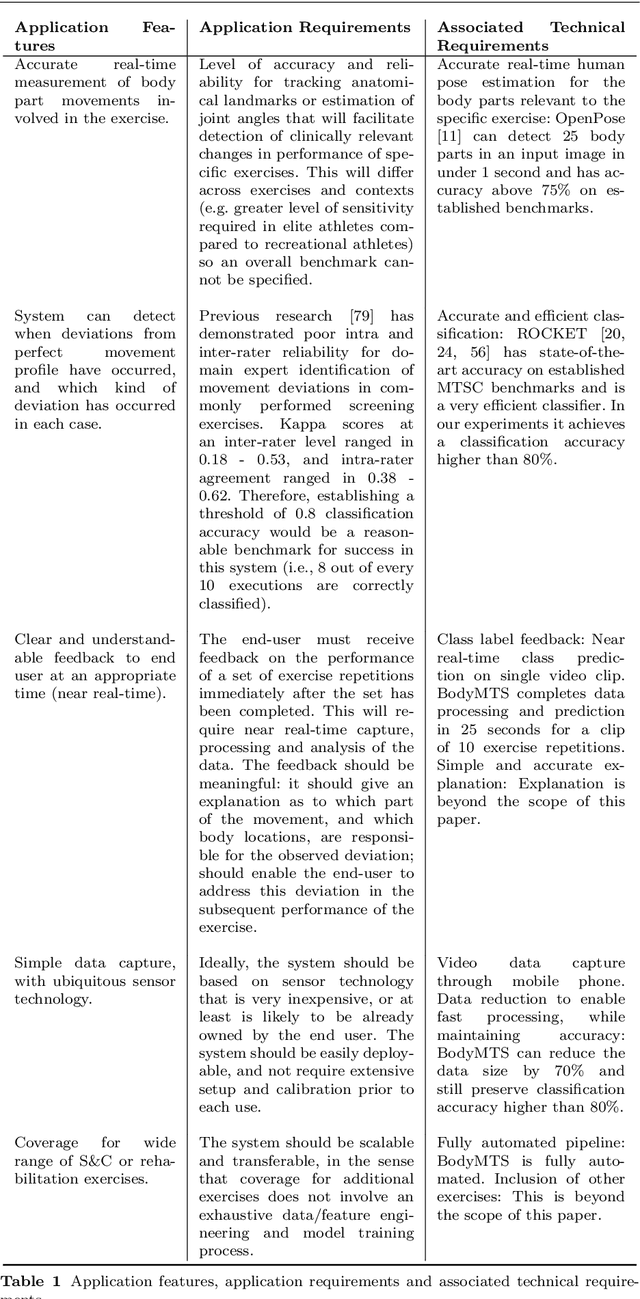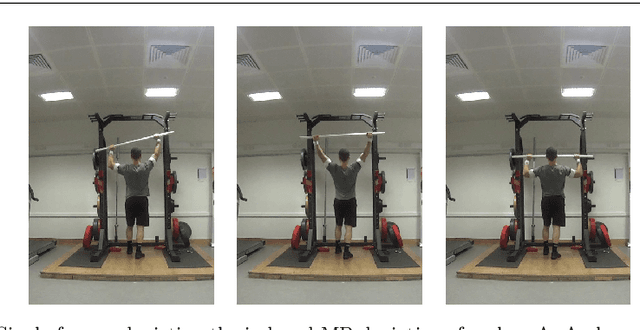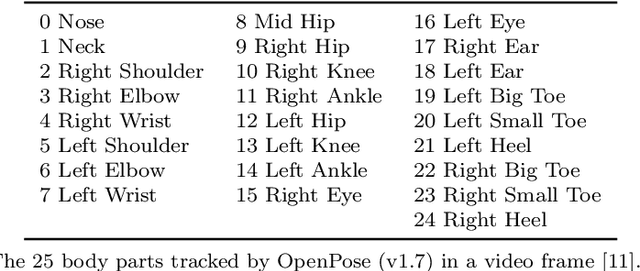Darragh Whelan
Machine Vision-Enabled Sports Performance Analysis
Dec 18, 2023Abstract:$\textbf{Goal:}$ This study investigates the feasibility of monocular 2D markerless motion capture (MMC) using a single smartphone to measure jump height, velocity, flight time, contact time, and range of motion (ROM) during motor tasks. $\textbf{Methods:}$ Sixteen healthy adults performed three repetitions of selected tests while their body movements were recorded using force plates, optical motion capture (OMC), and a smartphone camera. MMC was then performed on the smartphone videos using OpenPose v1.7.0. $\textbf{Results:}$ MMC demonstrated excellent agreement with ground truth for jump height and velocity measurements. However, MMC's performance varied from poor to moderate for flight time, contact time, ROM, and angular velocity measurements. $\textbf{Conclusions:}$ These findings suggest that monocular 2D MMC may be a viable alternative to OMC or force plates for assessing sports performance during jumps and velocity-based tests. Additionally, MMC could provide valuable visual feedback for flight time, contact time, ROM, and angular velocity measurements.
An Examination of Wearable Sensors and Video Data Capture for Human Exercise Classification
Jul 10, 2023



Abstract:Wearable sensors such as Inertial Measurement Units (IMUs) are often used to assess the performance of human exercise. Common approaches use handcrafted features based on domain expertise or automatically extracted features using time series analysis. Multiple sensors are required to achieve high classification accuracy, which is not very practical. These sensors require calibration and synchronization and may lead to discomfort over longer time periods. Recent work utilizing computer vision techniques has shown similar performance using video, without the need for manual feature engineering, and avoiding some pitfalls such as sensor calibration and placement on the body. In this paper, we compare the performance of IMUs to a video-based approach for human exercise classification on two real-world datasets consisting of Military Press and Rowing exercises. We compare the performance using a single camera that captures video in the frontal view versus using 5 IMUs placed on different parts of the body. We observe that an approach based on a single camera can outperform a single IMU by 10 percentage points on average. Additionally, a minimum of 3 IMUs are required to outperform a single camera. We observe that working with the raw data using multivariate time series classifiers outperforms traditional approaches based on handcrafted or automatically extracted features. Finally, we show that an ensemble model combining the data from a single camera with a single IMU outperforms either data modality. Our work opens up new and more realistic avenues for this application, where a video captured using a readily available smartphone camera, combined with a single sensor, can be used for effective human exercise classification.
Quantifying Jump Height Using Markerless Motion Capture with a Single Smartphone
Feb 21, 2023



Abstract:Goal: The countermovement jump (CMJ) is commonly used to measure the explosive power of the lower body. This study evaluates how accurately markerless motion capture (MMC) with a single smartphone can measure bilateral and unilateral CMJ jump height. Methods: First, three repetitions each of bilateral and unilateral CMJ were performed by sixteen healthy adults (mean age: 30.87 $\pm$ 7.24 years; mean BMI: 23.14 $\pm$ 2.55 $kg/m^2$) on force plates and simultaneously captured using optical motion capture (OMC) and one smartphone camera. Next, MMC was performed on the smartphone videos using OpenPose. Then, we evaluated MMC in quantifying jump height using the force plate and OMC as ground truths. Results: MMC quantifies jump heights with MAE between 1.47 and 2.82 cm, and ICC between 0.84 and 0.99 without manual segmentation and camera calibration. Conclusions: Our results suggest that using a single smartphone for markerless motion capture is feasible. Index Terms - Countermovement jump, Markerless motion capture, Optical motion capture, Jump height. Impact Statement - Countermovement jump height can be accurately quantified using markerless motion capture with a single smartphone, with a simple setup that requires neither camera calibration nor manual segmentation.
Fast and Robust Video-Based Exercise Classification via Body Pose Tracking and Scalable Multivariate Time Series Classifiers
Oct 02, 2022



Abstract:Technological advancements have spurred the usage of machine learning based applications in sports science. Physiotherapists, sports coaches and athletes actively look to incorporate the latest technologies in order to further improve performance and avoid injuries. While wearable sensors are very popular, their use is hindered by constraints on battery power and sensor calibration, especially for use cases which require multiple sensors to be placed on the body. Hence, there is renewed interest in video-based data capture and analysis for sports science. In this paper, we present the application of classifying S\&C exercises using video. We focus on the popular Military Press exercise, where the execution is captured with a video-camera using a mobile device, such as a mobile phone, and the goal is to classify the execution into different types. Since video recordings need a lot of storage and computation, this use case requires data reduction, while preserving the classification accuracy and enabling fast prediction. To this end, we propose an approach named BodyMTS to turn video into time series by employing body pose tracking, followed by training and prediction using multivariate time series classifiers. We analyze the accuracy and robustness of BodyMTS and show that it is robust to different types of noise caused by either video quality or pose estimation factors. We compare BodyMTS to state-of-the-art deep learning methods which classify human activity directly from videos and show that BodyMTS achieves similar accuracy, but with reduced running time and model engineering effort. Finally, we discuss some of the practical aspects of employing BodyMTS in this application in terms of accuracy and robustness under reduced data quality and size. We show that BodyMTS achieves an average accuracy of 87\%, which is significantly higher than the accuracy of human domain experts.
 Add to Chrome
Add to Chrome Add to Firefox
Add to Firefox Add to Edge
Add to Edge